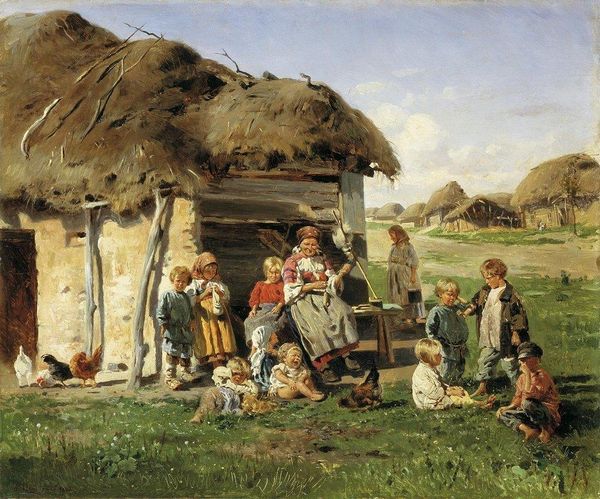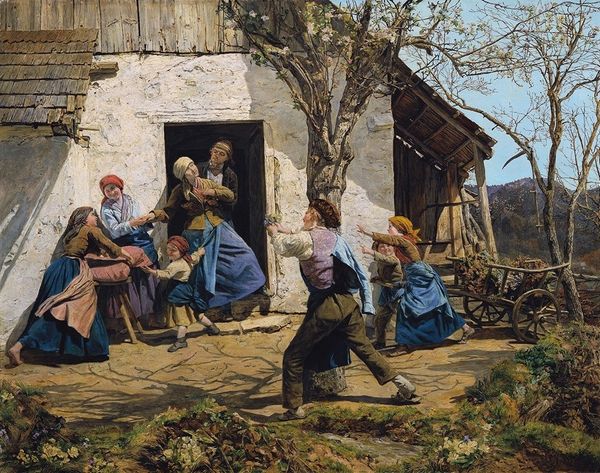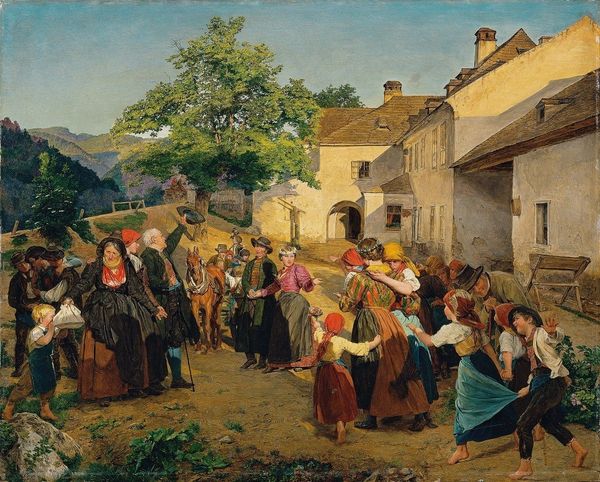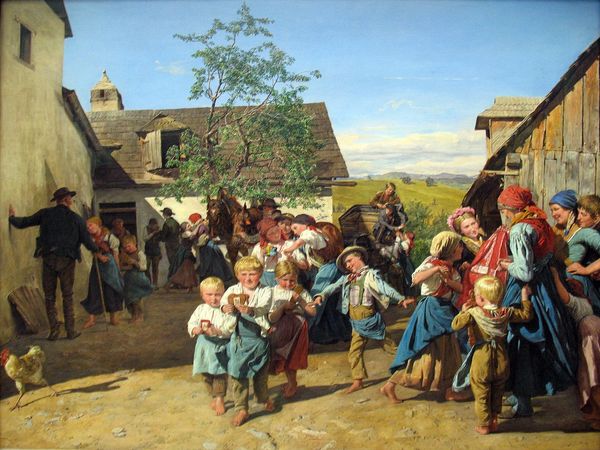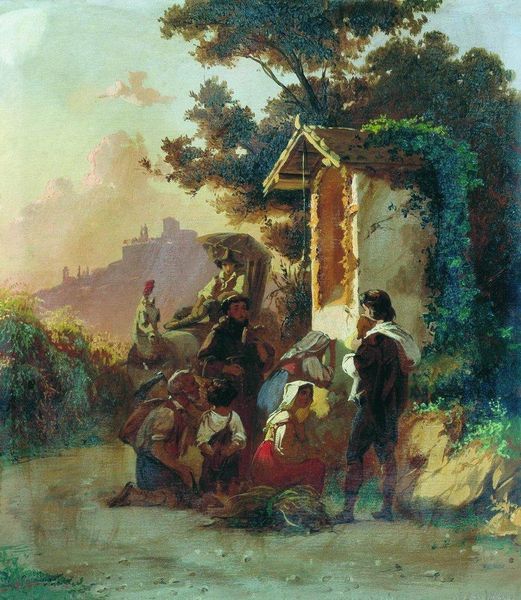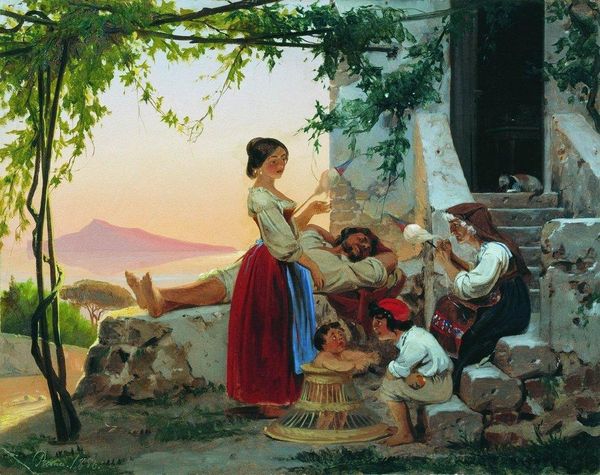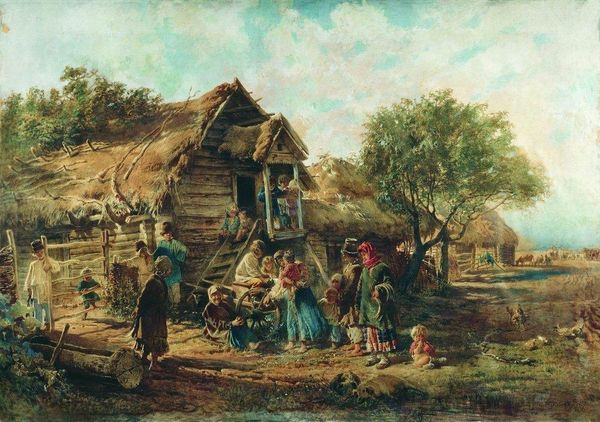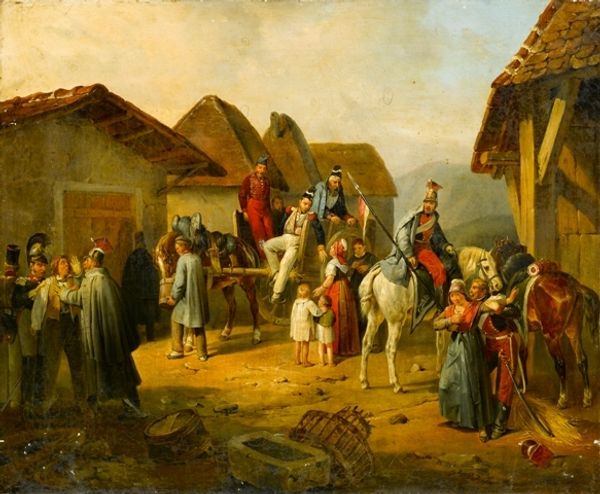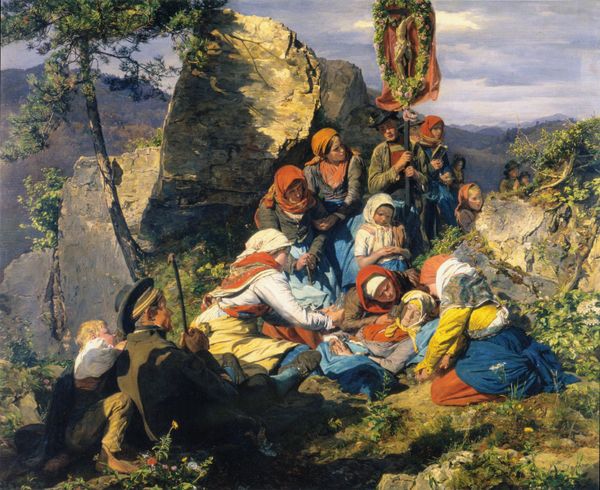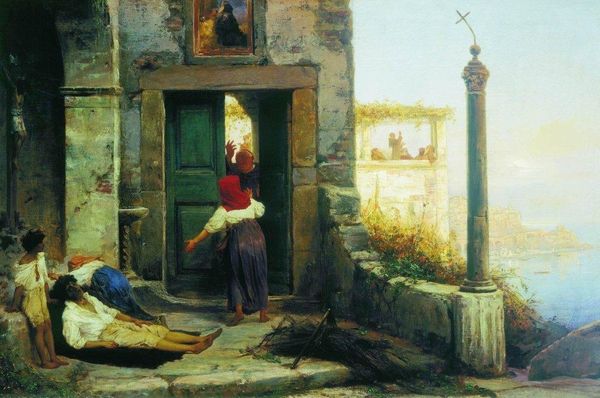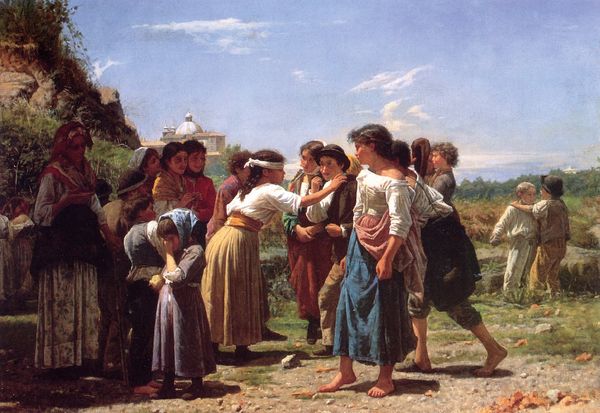
Copyright: Public domain
Curator: Fyodor Bronnikov's 1858 painting, "In the Chapel," presents a scene teeming with both piety and everyday life, captured with oil paints. Editor: It strikes me as incredibly detailed and sentimental, almost staged. The light, the poses—it’s a bit too picturesque, perhaps. Curator: Perhaps, but let's delve into those details. Bronnikov gives us such a rich understanding of textures and the societal strata in one snapshot. Notice the fabrics – the coarse spun garments of the peasantry against the slightly better clothes of what seems a cleric or friar? Also the way the colors used – look how he contrasted it against the earthy palette of the landscape. Editor: Indeed. The central chapel with its archway holds an inherent visual weight, almost acting as a character, the vines crawling around its stone whispering histories. I keep coming back to the gestures; they're quite telling. The lowered heads signify some sort of blessing or maybe even a lament. What sort of narrative threads can we trace from those subtle yet defined interactions? Curator: Right – and if you consider this was painted during a period of increased interest in historical genre painting – how do these forms connect with other pieces produced contemporaneously across Europe, what material access might the painter have had and from what tradition was this made in reference to – also a social context – how did they use certain colors for each material class. Editor: I see your point regarding social standing depicted using symbolic, visual communication; color as social signal and economic means. This recalls earlier Renaissance ideals of representation, yet Bronnikov seems keen to add a dimension of folksy realism—something distinctly Romantic as an artistic expression, to the spiritual weightiness typically reserved for iconic representation. What might those figures by the donkey cart add to this painting. Curator: Well there does seem to be so many people within that space for just prayer. They are, perhaps waiting their turn. Look, as we unravel Bronnikov’s depiction here, we are really teasing out how devotional and quotidian can be intertwined using humble materials like oil paint. Editor: Agreed; the painting gives voice to both simple observation of common life and something of transcendent import conveyed by these recurring iconic forms. Bronnikov indeed blends history with everyday spirituality.
Comments
No comments
Be the first to comment and join the conversation on the ultimate creative platform.
